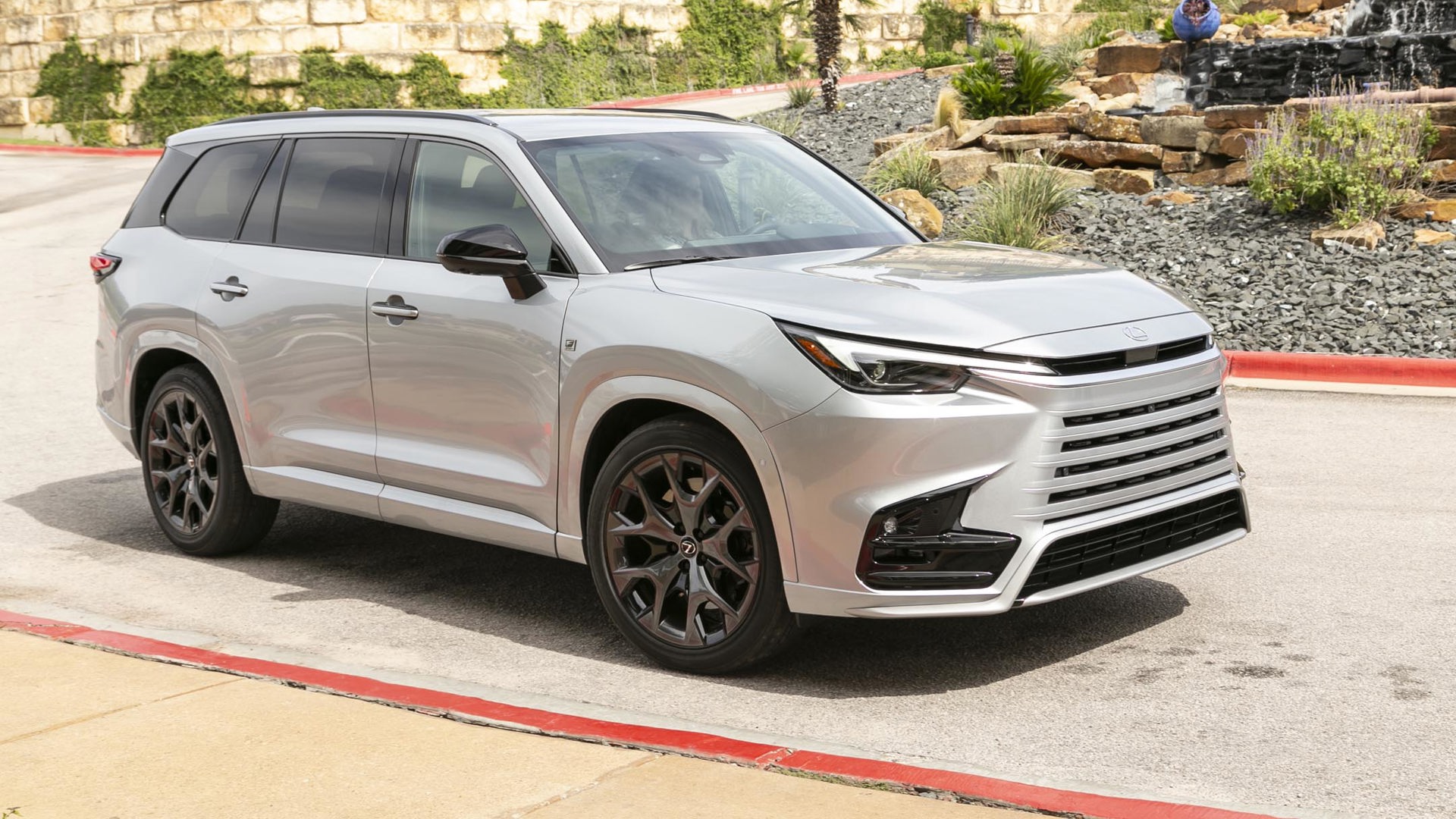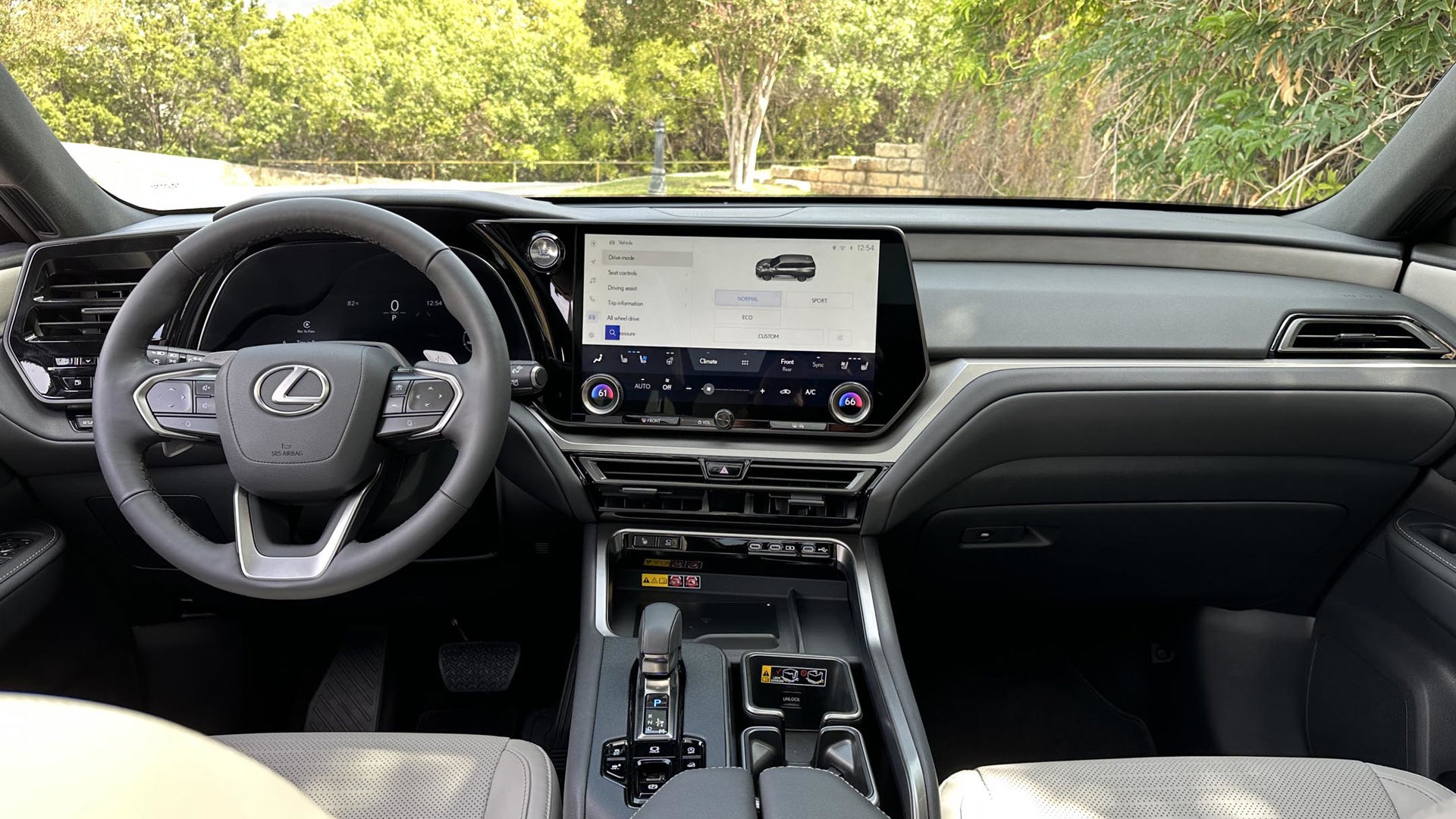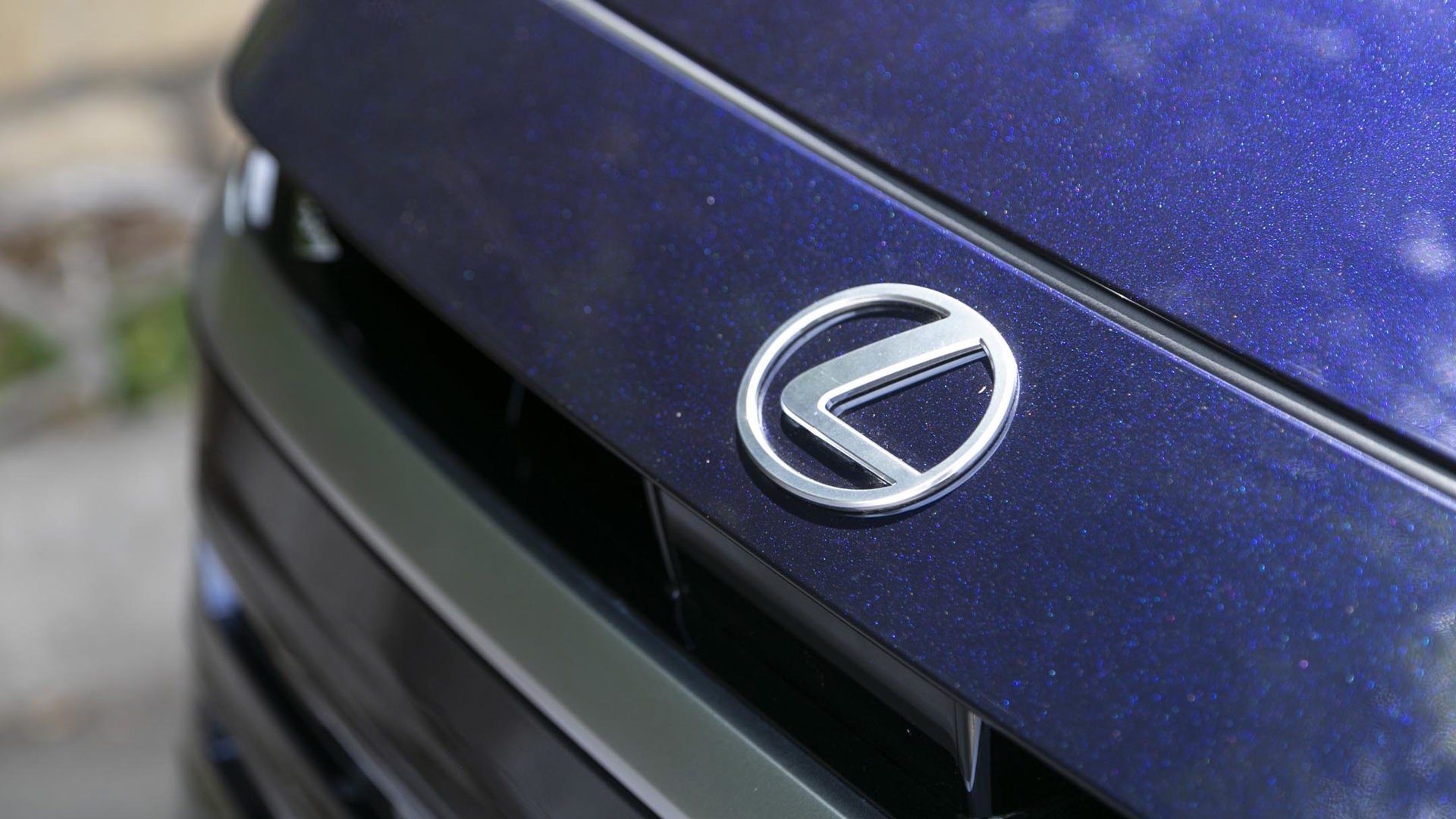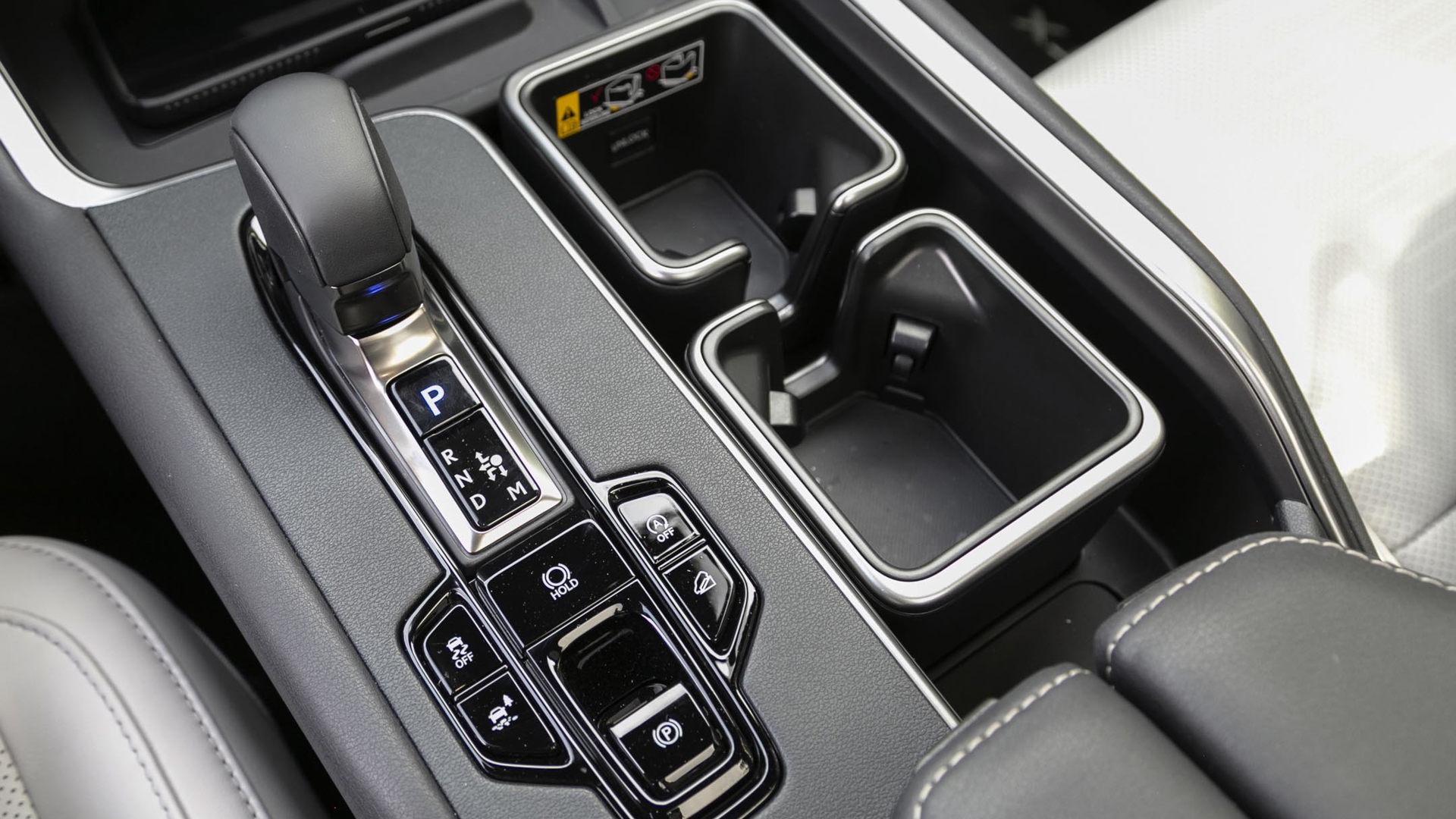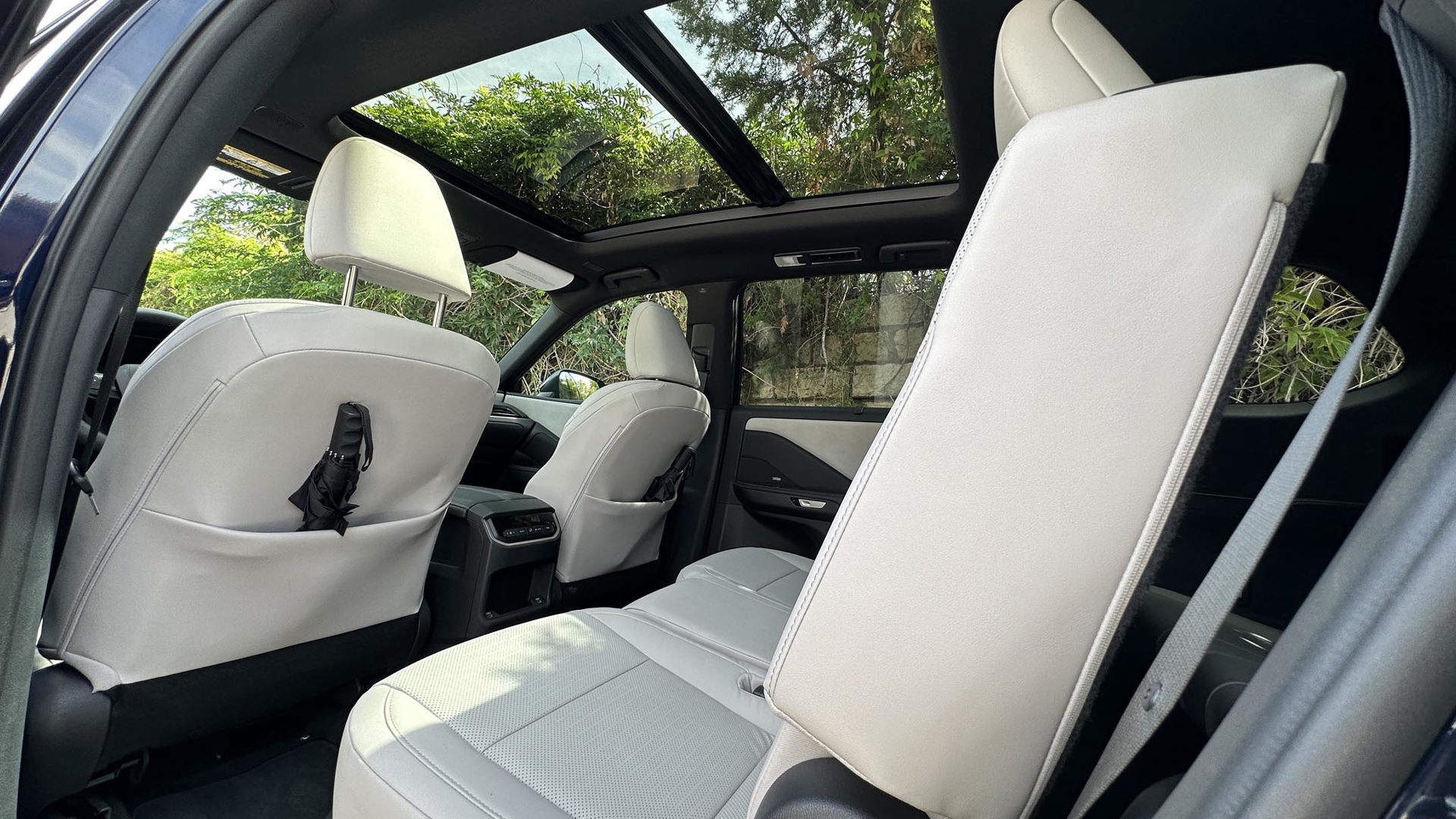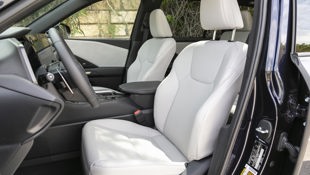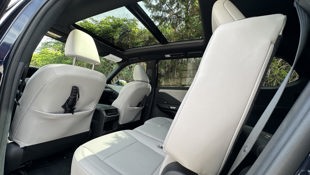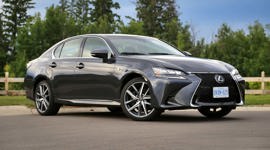If variety truly is the spice of life, then Lexus has cooked up a pretty zesty menu of SUVs. Not only are there seven different sport utility models in its lineup, but with the addition of the new TX, there are three separate three-row offerings. It’s a recipe that seems to be working for Lexus since sales are up 30 per cent compared to last year, and the brand is on track to claim the top market share spot, besting both BMW and Mercedes-Benz in Canada for the first time.
Lexus expects to move more units of the TX in the first year than it sold of the now-defunct RX L in its entire four-year run. It’s also expected the TX will become the third-most-popular seller in Canada behind its NX and RX siblings, and after spending a day driving each of the three TX variants, there’s little reason to doubt Lexus’ estimates.
Stretched Platform Provides Ample Space
Unlike the upcoming mucho-macho off-road-ready GX and the full-sized LX, the TX isn’t built on a truck-based platform, but rather shares a scalable platform with the smaller Lexus RX and NX. Compared to the previous-generation three-row RX L, the TX expands considerably, growing 160 mm (6.3 inches) in overall length, almost all of which ended up stretching the wheelbase. The TX is also taller by 71 mm and wider by 69 mm.
Despite its square-shouldered dimensions, it’s a handsome machine from most angles, with the rear three-quarter view looking especially good thanks to the blacked-out D-pillar giving a cantilevered appearance to the roof line. The front takes the Lexus spindle grille treatment in a new direction, but it’s still oversized and polarizing at best. Inside, it’s nicely finished if rather conservative, and while base trim material choices don’t feel overly premium, they’re well-assembled, and moving up the trim levels gets decidedly fancier finishes.
The TX is meant to be a pragmatic premium three-row crossover with a genuinely usable third row, and to that end, it succeeds. In fact, one of the goals Lexus set for the TX was to ensure there wasn’t a bad seat in the place. With the third row offering suitable width, support, headroom, and even foot space for adults, while also providing niceties like climate control vents, USB-C ports, and even padded armrests, they’ve done a heck of a job. My six-foot-tall driving partner was quite content to sit in the third row for a lengthy part of our drive route while I chauffeured him around.
Despite what’s likely the roomiest cabin in the class, there’s also impressive cargo capacity behind the third row. While the 569 L of space sounds impressive, it’s also a usable space that Lexus claims can hold seven typical carry-on suitcases – one for each occupant (on models with the second-row bench seat, that is). Fold all the seats down and at 2,747 L, there’s more space than what’s offered in an Acura MDX or Infiniti QX60.
Premium Features and Comfort
While the TX might ride on a modified version of the RX and NX’s platform, its closest relative is the new Toyota Grand Highlander that shares the same dimensions, plenty of mechanical specs, and even the same Indiana assembly line. As has been the case for decades, the Lexus version spends more time in the oven, baking in some additional refinement, smoothness, and quietness. While we’ve already come away mighty impressed by the Grand Highlander for its sensibly designed cabin and tons of usable space, the TX shares those qualities while stepping up the poshness throughout.
The standard 14-inch touchscreen in the central dashboard serves as the interface for the infotainment system. It offers easy, wireless smartphone connectivity that proved reliable in each of the several models driven. The system is fast, responsive, and easy to operate. The onboard navigation system is cloud-based, enabling real-time traffic and guidance to help ensure directions are as up-to-date as possible at all times.
Even the most affordable TX features a 12-speaker sound system, panoramic roof, 20-inch wheels, and heated rear seats with heated and ventilated front seats. From there, working up the model line, the feature count grows with the addition of semi-aniline leather, ultra-suede textiles, improved interior and exterior lighting, head-up display, 360-degree view monitoring, and an incredible 21-speaker, 1,800-watt audio system.
Part of the sound system is a noise-cancelling process whereby a series of microphones positioned throughout the cabin listen for road, wind, or engine frequencies that can then be offset with piped-in frequencies, making the cabin quieter for occupants. This, combined with more seam welds, more insulation, and acoustic front glass, makes the TX notably quieter than its Toyota cousin.
Trio of Drivetrains
The starting point for the TX lineup is the TX 350 that’s motivated by a 2.4L turbocharged four-cylinder engine connected to an eight-speed automatic transmission. Unlike the variation of this engine found in the Grand Highlander, Lexus requires premium fuel for the TX, netting it slightly improved fuel efficiency (10.3 L/100 km combined) and an extra 10 horsepower (up to 275 hp).
From there, the TX 500h features the same 2.4L turbo engine but benefits from a hybrid system that integrates a 64-kW front motor along with a 76-kW motor in the rear axle to drive the rear wheels. Combined, the system generates up to 366 hp, and Toyota anticipates a combined consumption rate of 8.6 L/100 km.
At the top of the lineup is the plug-in hybrid TX 550h+ with a 3.5L V6 generating a combined 404 horsepower with the PHEV components. The 550h+ is estimated to deliver a combined fuel consumption rate of 7.8 L/100 km and up to 53 km of pure EV range.
All Canadian TX models are all-wheel drive, with the TX 350 having a conventional mechanical system that defaults to 75:25 front-to-rear power delivery ratio under normal driving conditions that can adjust to up to a 50:50 split when traction limitations require it. The two hybrid models utilize Lexus’ all-wheel drive system that sees the motor in the rear transaxle power the rear wheels. This system can vary the power split from 100:0 all the way to 20:80 front-to-rear.
All TX models, regardless of powertrain, are rated to tow up to 2,268 kg (5,000 lb).
On the Road

For many buyers, the TX 350’s turbo four-cylinder engine should provide ample power for their driving needs. It arrives at its peak torque at 1,700 rpm, making it decently spritely around town. Its eight-speed automatic shifts smoothly and swiftly, being well-matched to this engine. The ride quality benefits from the TX’s long wheelbase and on the 350 we drove, the smaller 20-inch wheels with their taller sidewalls offer a bit more compliance than the 22s found on the hybrid models driven. It conducts itself well with decent body motion control and precise steering (if void of any real road feel).
All Canadian TX 500h models will be decked out in F SPORT trims and come with active rear steering that helps shrink the turning circle at low speeds and increase responsiveness and stability at higher speeds. Of the three variants driven, the 500h felt like the sweet spot in the model range. Not only does the adaptive suspension do a good job of smoothing out bumps, but it keeps the big SUV reasonably composed when cornering, too. What’s more, the bump in power over the 350 is felt, especially for passing when the electric motors help give a satisfying extra kick.
By comparison, the TX 550h+’s extra horsepower is offset by the nearly 200 kg of extra mass it hauls around, making it feel no quicker than the 500h. The 550h+ does have a smoother and more satisfying engine growl when the driver really gives it a boot-full, but none of the TX trims are overly sporty to drive, so this perk will likely be moot to most buyers. The TX 550h+ is also the only one of this trio with a continuously variable transmission (CVT) that, while smooth, saps some of the responsiveness found in the TX 500h with its traditional six-speed automatic.
Of note, the 550h+’s fuel tank is 10L smaller than the 500h’s, and for longer trips, the similarity in their highway fuel consumption is going to mean the 550h+ has a notably shorter overall range.
Advanced Driver Aids

Lexus has included its latest safety and driver aid features, including automated parking, lane change assist, several forward and rearward sensors to help automated braking, and, in top trim models, traffic jam assist, which allows the car to manage throttle, braking, and even hands-free steering duties when on major highways.
The TX offers different terrain optimization settings for mild rough-road excursions, but this rig is not meant for rock crawling. Switching between Normal and Sport drive modes produced mild changes in throttle responsiveness and nothing else discernable on our test drives.
Pricing and Final Thoughts

Starting at $68,750, the entry trim is the well-equipped TX 350 Luxury. From there, the $71,500 TX 350 Ultra Luxury adds some key features luxury buyers likely want (like a genuine leather interior), while the Executive trim at $79,500 adds the premium audio, 22-inch wheels, and the advanced driving assistance modes.
The TX 500h is broken into two F SPORT Performance trims starting at $84,200 and climbing to $90,200 for buyers who want all the features and drive assistance modes.
While both the TX 350 and TX 500h will be available at Canadian dealerships later this month, the TX 550h+ will arrive later next year, with pricing to be announced closer to its actual launch date.
With high hopes for continued segment domination, Lexus has pulled out all the stops on the TX. Offering three separate powertrains, plus class-leading comfort and space (not to mention Lexus’ celebrated dealer experience) makes it a pretty safe bet for success.
| Model | Drivetrain | MSRP | Est. Selling Price* |
|---|---|---|---|
| TX 350 Luxury | 2.4L Turbo | $68,750 | $72,600 |
| TX 350 Ultra Luxury | 2.4L Turbo | $71,500 | $75,350 |
| TX 350 Executive (7 pass) | 2.4L Turbo | $79,500 | $83,350 |
| TX 350 Executive (6 pass) | 2.4L Turbo | $80,250 | $84,100 |
| TX 500 h F SPORT Performance 2 | 2.4L Turbo Hybrid | $84,200 | $88,050 |
| TX 500 h F SPORT Performance 3 | 2.4L Turbo Hybrid | $90,200 | $94,050 |
|
*Includes PDI, Destination, and Dealer Fees |
|||
